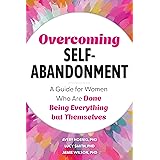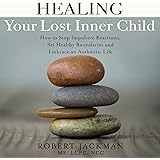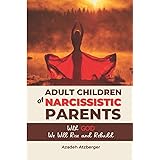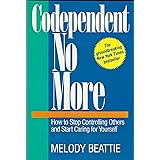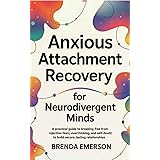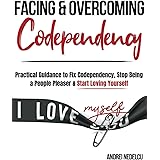Understanding internet addiction is a crucial aspect of navigating our increasingly digital world, a point powerfully articulated by Assoc. Prof. Onur Noyan in the accompanying video. As Professor Noyan highlights, the challenge isn’t merely with the internet itself, but rather with the specific platforms and activities we engage with online. This behavioral addiction manifests through certain patterns, making self-awareness and proactive measures essential for maintaining digital well-being.
The concept of internet addiction extends beyond simply spending time online; it delves into the psychological and behavioral patterns developed through sustained digital engagement. It’s about how the internet, through its various platforms, facilitates compulsions that can detrimentally impact daily life. Recognizing these underlying mechanisms is the foundational step toward prevention and healthy online habits.
Beyond the Browser: Deconstructing Internet Addiction
Assoc. Prof. Noyan rightly points out that internet addiction emerges from the specific “areas entered via the internet.” This is a critical distinction. It’s not the infrastructure that addicts, but the content and interactive experiences it delivers. Understanding these distinct facets helps individuals pinpoint problem areas and tailor effective interventions. Various forms of internet addiction have been identified, each stemming from different online activities.
Social Media Overuse
For many, social media platforms become a primary source of compulsive online engagement. The endless scroll, the pursuit of likes and validation, and the fear of missing out (FOMO) can create a powerful dopamine reward loop. Individuals often find themselves reaching for their devices instinctively, driven by a subconscious need for connection or distraction, rather than a conscious decision. This constant digital presence can erode real-world social interactions and personal productivity, leading to feelings of isolation despite being “connected.”
Gaming Disorder
Another significant area is online gaming. Gaming disorder, recognized by the World Health Organization, involves a pattern of persistent or recurrent gaming behavior (‘digital-gaming’ or ‘video-gaming’), which may be online or offline, manifested by impaired control over gaming, increasing priority given to gaming over other life interests and daily activities, and continuation or escalation of gaming despite the occurrence of negative consequences. The immersive nature and competitive aspects of many online games can lead to extensive playtimes, often at the expense of sleep, education, or employment.
Online Shopping and Information Seeking
Less commonly discussed but equally impactful are compulsive online shopping or excessive information seeking. The thrill of a new purchase or the endless rabbit hole of research can provide temporary escape or gratification, leading to significant time and financial expenditure. While these activities are not inherently problematic, their compulsive nature, driven by an inability to self-regulate, transforms them into potential pathways to addiction.
Are You at Risk? Self-Assessment for Internet Addiction
A core message from the video is the importance of self-assessment. Assoc. Prof. Noyan suggests asking oneself key questions to gauge one’s relationship with the internet. These questions serve as a powerful personal diagnostic tool, enabling individuals to confront their habits honestly. It’s about looking inward and evaluating the functional role the internet plays in one’s emotional and daily life.
Consider the following introspective prompts, echoing the Professor’s guidance:
- Do I turn to the internet when I’m bored or seeking happiness? Many people use the internet as an emotional crutch, a readily available source of distraction or superficial pleasure to avoid uncomfortable feelings or silence. If the internet is your primary coping mechanism for negative emotions, it might signal an unhealthy reliance.
- Do I desire to spend less time online but consistently find myself spending more? This discrepancy between intention and behavior is a classic indicator of a behavioral addiction. A persistent failure to control or reduce internet use, despite efforts to do so, suggests a loss of autonomy over your digital habits.
These questions highlight a crucial distinction: occasional heavy use is different from compulsive use driven by emotional states or a lack of control. True internet addiction often involves a preoccupation with the internet, withdrawal symptoms when not online (e.g., irritability, anxiety), tolerance (needing more time online to achieve the same satisfaction), and a negative impact on relationships, work, or health.
Cultivating Awareness: The First Step to Digital Well-being
The most crucial step in preventing internet addiction, as Assoc. Prof. Noyan emphasizes, is developing awareness about one’s internet usage. This isn’t about shaming or judging, but rather fostering a mindful connection to our digital habits. We cannot simply eliminate the internet from our lives; it’s an indispensable tool in modern society. Therefore, informed and conscious usage becomes paramount.
Awareness involves more than just knowing you use the internet a lot. It means understanding when, why, and how you use it. Tracking your screen time, identifying emotional triggers that lead you online, and analyzing the actual value you derive from different online activities are all components of this heightened awareness. For instance, is scrolling through social media genuinely enriching, or is it a time-filler that leaves you feeling drained?
Analyzing Time Diligence Online
Professor Noyan advises analyzing the time frames spent online. This data-driven approach allows for objective self-reflection. Many smartphones and operating systems now offer built-in screen time trackers. Utilizing these tools can provide startling insights into the actual hours accumulated online each day or week. Once this quantifiable data is available, patterns become apparent. You might discover that significant portions of your day are lost to activities that don’t align with your personal or professional goals.
This analysis should extend to not just the quantity, but also the quality of your online time. Are you using the internet for productive work, learning, or genuine connection? Or is it primarily for passive consumption, escapism, or aimless browsing? Understanding this distinction is key to taking constructive steps towards healthier habits.
Practicing Safe Internet Use: Strategies for Prevention
Given that completely abandoning the internet is impractical for most, the focus shifts to establishing safe internet usage patterns. This involves setting boundaries, creating mindful routines, and finding alternative ways to fulfill needs that the internet might currently be serving unhealthily. Implementing these preventative measures proactively can make a significant difference in fostering a balanced digital life and preventing internet addiction from taking hold.
Set Clear Boundaries and Schedules
Establish specific times of the day or week when you are intentionally offline. This could mean no phones at the dinner table, dedicated “screen-free” hours before bed, or a full digital detox day on weekends. Communicate these boundaries to family and friends so they can support your efforts.
Utilize Technology for Good
Paradoxically, technology can aid in managing technology. Use screen time monitoring apps to track your usage and set limits. Many apps allow you to block certain websites or applications after a set amount of time or during specific hours, effectively acting as a digital guardian. These tools can help build self-control until it becomes an ingrained habit.
Cultivate Offline Hobbies and Connections
Intentionally seek out activities that do not involve screens. Re-engage with old hobbies, learn a new skill, spend time in nature, or foster in-person social connections. When your life is rich with diverse experiences, the pull of the internet diminishes, as its role as the sole source of entertainment or social interaction is reduced.
Mindful Engagement
Before opening an app or clicking a link, pause and ask yourself: “Why am I doing this? What is my intention?” This brief moment of reflection can disrupt automatic, compulsive behaviors and help you make more conscious choices about your online activities. If the intention is merely to escape boredom or anxiety, consider alternative, healthier coping mechanisms.
Address Underlying Issues
Often, excessive internet use is a symptom of deeper issues such as stress, anxiety, depression, or loneliness. Addressing these underlying mental health concerns through therapy, mindfulness practices, or lifestyle changes can significantly reduce the compulsion to seek refuge online. For those struggling with severe internet addiction, professional help, such as cognitive behavioral therapy (CBT) techniques, can provide structured strategies for managing and overcoming these challenges.
Implementing these steps, rooted in the foundational awareness highlighted by Assoc. Prof. Onur Noyan, helps individuals manage their digital lives more effectively. By understanding the nature of internet addiction, honestly assessing personal habits, and proactively adopting strategies for safe internet usage, a healthier relationship with technology is entirely achievable.


